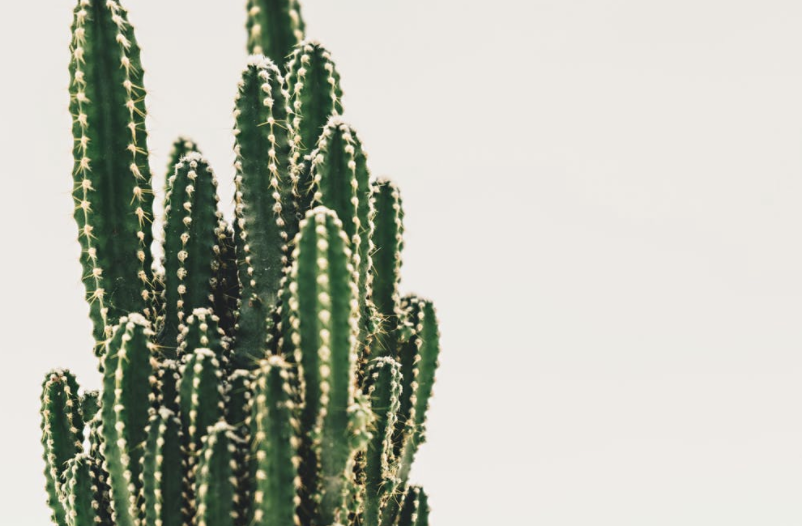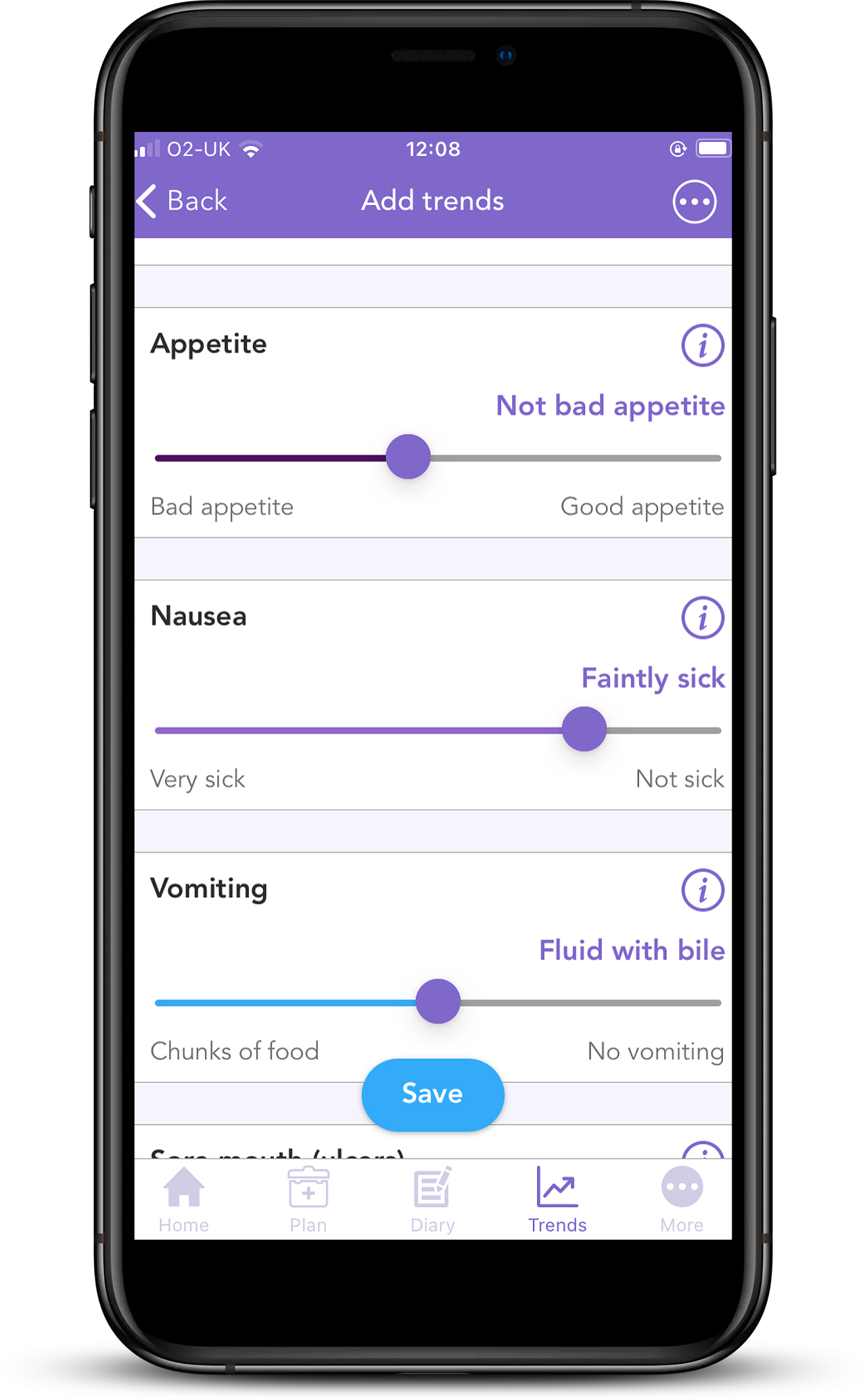
Changes in hair and hair loss are common breast cancer treatment side effects. Hair loss has been reported in 22.4% of breast cancer patients and hair thinning in 31.8% 1 . These side effects can cause emotional and psychological changes. In this blog we aim to increase awareness and understanding of what causes hair loss, when and for how long it can happen and provide useful insights on possible management methods. In order to achieve this, we had the pleasure to collaborate with Headwrappers, a hair loss advisory charity that focuses on providing alternatives to wigs and practical support for cancer treatment hair loss. Their aim is to help people feel more confident about themselves as they undergo cancer treatment related hair loss.
Types of cancer treatment and hair loss
Chemotherapy
Why does Chemotherapy cause hair loss?
To reduce cancer growth, chemotherapy drugs target the body’s fast dividing cells. However, chemo drugs can not always distinguish between healthy and cancer cells. Consequently, fast dividing healthy cells are also targeted and damaged.
Hair cells are some of the fastest dividing cells in the human body. This is why they are heavily impacted during chemotherapy. However, not all chemotherapy drugs cause hair loss. Some cause only head hair loss, whereas others affect hair loss across the whole body such as eyebrows and pubic hair. Speak to your care team to learn more about how your chemotherapy regimen will affect your hair.
What affects the risk of hair loss due to chemotherapy?
- Hair loss typically starts within 2–3 weeks of starting chemo treatment.
- Hair usually grows back after treatment finishes.
- Risk of hair loss depends on various factors
- Type of chemo drug, its dosage and combinations with other drugs 2
- Most effective and commonly recommended adjuvant chemo regimens for breast cancer (anthracycline and taxanes)3 cause the most hair loss. Meanwhile, other drugs such as capecitabine and vinorelbine, often used in metastatic cancers, cause less hair loss 2
Radiotherapy
Why does radiotherapy cause hair loss?
Like chemotherapy, radiotherapy targets fast dividing cells including hair cells. However, radiotherapy only affects hair in the treated area. For example, you may lose armpit hair if you receive radiotherapy to your armpit for your lymph nodes.
- Hair loss typically starts 2-3 weeks after radiotherapy
- Hair regrowth typically starts 2-4months after radiotherapy has ended 3, 4
- Intense/high dose radiotherapy treatment can cause permanent hair loss. Your doctor will be able to inform you if this may be the case 5
Hormone Therapy
Why does hormone therapy cause hair loss?
Hormone therapy does not cause full hair loss but it can cause hair thinning. Although the severity of hair loss is less pronounced with hormone therapy, it often lasts for a prolonged period of five to ten years. Therefore, you may be affected by these hair changes for longer periods of time.
What affects the risk of hair loss due to hormone therapy?
Like chemotherapy not all hormone therapies affect hair to the same degree.
- Aromatase inhibitors are associated with the most hair loss 6 . In fact, some studies have reported that 8% of breast cancer patients discontinue aromatase inhibitor therapy due to hair loss 7
After treatment your hair may regrow in patches, thinner or in a different colour. Your doctor or nurse will be able to provide more details on how your individual treatment may affect your hair regrowth.
Is there anything I can do to protect from hair loss?
There are many management techniques which you can adopt when dealing with cancer treatment related hair loss. In this section, we will discuss some of the most common including scalp cooling and practical tips.
What is scalp cooling?
Scalp cooling is a non-invasive technique that can reduce scalp hair loss caused by chemotherapy and improve its regrowth post chemotherapy 8 , 9, 10 . Scalp cooling works by reducing the amount of chemotherapy drugs that reach and enter your hair follicles. This is done by activating your natural, energy-preserving bodily reactions to cold temperatures. These include:
- Vasoconstriction, which is the process in which blood vessels constrict and get smaller in cold areas, reduces overall blood flow to these regions. Therefore, less chemotherapy will reach those areas including the cells of the hair follicles. It has been reported that blood flow is reduced by 60-80% through scalp cooling 11.
- Lower temperatures also cause a reduction in follicle activity. This leads to a reduction of chemicals absorbed from the bloodstream, including the amount of chemo drugs absorbed. This reduces the amount of chemo drugs in the hair structure, causing less damage to the hair. Furthermore, a reduction in follicle activity means the hair cells are no longer fast dividing and chemo drugs no longer target them 12
To achieve these reactions the scalp needs to be cooled to 22oC at a depth of 1-2mm 13. Scalp cooling techniques lower this scalp area to the desired 22oC with 3oC cooling liquid. 13
As cooling only occurs on the scalp, hair loss from other parts of your body, such as eyebrows and pubic hair, will not be protected by scalp cooling.
Scalp cooling is not effective with all chemotherapy drugs and it’s not always possible to know how effective the treatment will be. It is mainly effective with individual doxorubicin, epirubicin and paclitaxel chemotherapies 14, 25. However, with typical chemotherapy regimens based on a taxane drug (e.g paclitaxel) and an anthracycline (e.g. doxorubicin) scalp cooling is less effective 15, 25.
Paxman, a leading scalp cooling company, provides a useful decision making tool. Using your personalised treatment information, it generates the predicted benefit of scalp cooling on hair loss. You can access it here: Decision Making Guide
Please note that scalp cooling is not a viable option if you have:
- Scalp metastases
- Blood disorders
- If you have or have had skull, brain or skin cancer
This list is not exhaustive. Please speak to your medical team about possible individual risk factors.
It is important to remember that there will always be a degree of hair loss and your hair can change in appearance.
Although studies show high efficacy of scalp cooling in preventing chemo related hair loss, results are still varied across users. Not all users will achieve the same amount of hair retention. Hair type, chemotherapeutic drugs and personal factors can influence effectiveness. Speak to your care team about these individual factors.
How is scalp cooling delivered?
There are two scalp cooling methods available, they both aim to keep the scalp cool before, during and after chemotherapy administration. These are cold caps, and refrigerated scalp cooling systems.
The recommended amount of time you cool depends on your chemotherapy regimen. Your medical team will advise you how long you will need to keep the cooling on. On average, cooling is administered 30min prior to chemo infusions, continued throughout the infusions and 60-90 minutes post infusion 16. It may be recommended to wear the cap for longer if you have thicker and coarser hair.
If there is significant hair loss after the first chemotherapy session, the post infusion cooling can be extended by 30-60 minutes 17. Bald patches indicate that the cap was not fitted correctly 12
Cold Caps
A special cap, like a water polo cap filled with ice packs, is fitted on your head. It is replaced about every 30 minutes with a new one from the freezer to ensure they are always providing the correct amount of cooling.
As the cool cap is wire free you can go to the bathroom or stretch your legs. Please be careful of the added weight of the cap and possible dizziness.
Refrigerated Scalp Cooling Systems
Refrigerated scalp cooling systems work by continuously pumping refrigerated liquid round the cap from a refrigerated cooling system. This has the advantage that the cap does not need to be refitted every 30 minutes.
If you need a bathroom break the cap can be disconnected. It can remain disconnected for around 8 minutes without affecting its efficacy. After which it is recommended to add the time you were disconnected to the total time you should wear the cap.
Are there side effects?
Although this is a non-invasive process, it can be uncomfortable:
- You may experience discomfort wearing the cap from the additional weight to your scalp,
- your scalp can feel cold and tingly, 18
- you may develop headaches or feel light-headed and dizzy, 2 18
- you may experience nausea 2 18
Keeping track of your various symptoms can help give you a clearer overview of how things have changed – that way it won’t all seem so much of a blur.

With OWise you can track more than 30 wellbeing indicators, including nausea. Simply input how you’re feeling each day using the sliders and view how things develop over time using the graphs. You can even share these with your care team or with a loved one.
Overall patients report low discomfort when scalp cooling 19. Studies indicate 15% of patients experience discomfort when scalp cooling 18. However, although not necessarily uncomfortable, another study reported that 33% of patients receiving scalp cooling referred to it as a burden and 53% reported being able to tolerate scalp cooling throughout the treatment 20 . However none of the patients discontinued scalp cooling treatment. The current literature reports low discontinuation rates 10 , 21 , 22 with high satisfaction.
It is up to you whether you wish to continue the process of not. Some women stop because of the additional treatment time scalp cooling adds to chemo infusions. It is important to note that women also report satisfaction with their decision to not scalp cool and their post chemo hair 26.
As scalp cooling works by reducing the amount of chemo drugs in the scalp area there may be fears of scalp metastasis (cancer recurring in the scalp). However the current literature does not suggest this is a risk. 21, 23 , 24
Tips for scalp cooling?
- Dress warm and comfortable, bring blankets
- Bring hot liquids to drink, preferably through a straw. This will also help you stay hydrated and reduce risk of UTIs (Preferably non caffeinated as caffeine dehydrates)
- Patients report the first 20 minutes as being the most challenging. Afterwards the tingling and cold sensation subdues and they become more accustomed to the feeling.
- To help you relax in these first moments you can practice mindful breathing exercises
- Bring distractions such as magazines. Your healthcare provider will be able to inform you if you will be able to use headphones with your cap. This way you can listen to music, a podcast or watch a tv show on your devices.
- To enhance scalp to cap contact and cooling you can wet your hair and apply a little bit of conditioning
- Although the cap needs to be fitted tightly to improve outcomes, you should be able to breathe, talk and drink comfortably. Prove the care team fitting you with as much feedback to make your fitting as comfortable and successful as possible.
- If using a refrigerated system you can ask the nurses to adjust the cables leading to the refrigeration to reduce drag and extra weight
- Place gauze or padding under the straps (chin strap, cheeks, ears, forehead)
- You can use surgical tape to help place glasses as the cap may be restricting their usual placement
- After removal of the cap continue sitting for ~10min to allow your body to reaccustom itself and pass any possible dizziness
Not all hospitals and centres have these scalp cooling facilities and you may not always be offered them. If you are interested in this treatment, ask your care team which hospitals and facilities in your area offer the service. It is not uncommon to receive scalp cooling treatments in a different location from where you received your oncology care.
If you do decide for scalp cooling and it is successful in preventing hair loss, you will still need to treat your hair carefully as it will be fragile. This can help to further reduce hair loss. Read on for hair care tips.
Advice from Headwrappers
Everyone’s body will react differently to cancer treatment and everyone will react differently to the resulting physical changes. Some people may embrace their hair loss, others may feel as if it defines their cancer experience both positively and negatively. The important thing is to acknowledge that it is OK to feel sad about losing your hair and it is OK to seek help.

Headwrappers run a fortnightly support session ‘Tea Top Knots & Turbans’ that provides a safe environment to talk to others going through the same changes. You can register for it here:
Tea, Top Knots & Turbans informal chat session
They also offer monthly hair loss support sessions. You can register for it here: HeadWrappers hair loss support session
They want to help you feel prepared for the changes ahead.
In preparation to treatment
- Take a selfie – you may want to check the position of your eyebrows if they thin or you lose them later in your treatment.
- Take a lock of your hair – you may want to check your natural colour either when choosing a wig or at a time after your treatment when you could colour your hair.
- You may want to cut your hair shorter in preparation as it can make the transition to hair loss easier.
- Book a HeadWrappers’ hair loss support session – you will be equipped with scarf tying skills and provided with information which will support you through your hair loss – enquire about a session by emailing us here : advice@headwrappers.org
During treatment you can use a sleep cap. This will help catch loose hairs in your sleep and will help your scalp stay warm.
Chemotherapy will distress and damage your hair. Avoid additional damage via:
- Using natural pH neutral products
- Wash your hair in lukewarm water rather than hot as heat opens pores leading to moisture loss. Colder water seals the pores and can help retain moisture.
- Avoid heat products such as straighteners and blow dryers. Avoid patting your hair dry rather than rubbing will also limit the amount of distress.
- Avoid hair bleaching and colouring. This can also trigger an allergic reaction, even with products you have used before as your body is fragile from the cancer treatment.
If you feel the time is right to shave off your hair, please ensure that you use clippers and not a razor. When bare the scalp loses moisture easily and can get very dry. Natural oils, such as aloe vera, can be applied to the scalp to help moisture retention and combat dryness. Protect your scalp from the sun by using at a minimum SPF 30, even under head covers.
Often not only scalp hair is affected by treatment. You may lose your eyebrows, eyelashes and nasal hair. These are your first line natural defences that help protect you from the elements. A reduction of these hairs can make you more susceptible to hay fever, a runny nose and dust/lint entering your eyes. Glasses can help protect your eyes, especially when windy. If you don’t wear prescription glasses you can wear sun glasses or non prescription lens glasses. Make up can also fall/melt into your eyes. If you choose to wear makeup make sure it is sweat proof and natural to limit the chances of a reaction.
When you have completed your treatment continue looking after your scalp with delicate products and avoid heat. Gentle massage of the scalp can stimulate blood flow that encourages hair regrowth. Please avoid head massages during chemotherapy as this further activates the hair follicles, increasing uptake of chemo drugs which will enhance hair damage and loss.
Your healthcare team will be able to advise you if scalp cooling could be an effective treatment for your individual prognosis and needs or if other solutions such as wigs or scarfs are better suited. However, it is important to remember that the decision on what you do and how you manage possible hair loss is up to you.

We hope this blog has helped you understand cancer treatment induced hair loss and possible management techniques, and that you now feel more equipped to make decisions regarding your health.
Our aim is to make sure you are kept informed so make sure to follow our Instagram and Twitter accounts for any updates.
Useful links
https://www.cancer.org/treatment/treatments-and-side-effects/physical-side-effects/hair-loss.html
References
- Gallicchio, Lisa, Carla Calhoun, and Kathy J. Helzlsouer. “Aromatase inhibitor therapy and hair loss among breast cancer survivors.” Breast cancer research and treatment 142.2 (2013): 435-443.
- Batchelor, Dallas. “Hair and cancer chemotherapy: consequences and nursing care–a literature study.” European journal of cancer care 10.3 (2001): 147-163.
- Cox, Maurice C., et al. “Acute toxicity profile of craniospinal irradiation with intensity-modulated radiation therapy in children with medulloblastoma: A prospective analysis.” Radiation Oncology 10.1 (2015): 1-9.
- Suneja, Gita, et al. “Acute toxicity of proton beam radiation for pediatric central nervous system malignancies.” Pediatric blood & cancer 60.9 (2013): 1431-1436.
- Freites-Martinez, Azael, et al. “Hair disorders in cancer survivors.” Journal of the American Academy of Dermatology 80.5 (2019): 1199-1213.
- Saggar, Vishal, et al. “Alopecia with endocrine therapies in patients with cancer.” The oncologist 18.10 (2013): 1126.
- Moscetti, Luca, et al. “Adjuvant aromatase inhibitor therapy in early breast cancer: what factors lead patients to discontinue treatment?.” Tumori Journal 101.5 (2015): 469-473.
- Kinoshita, Takayuki, et al. “Efficacy of scalp cooling in preventing and recovering from chemotherapy-induced alopecia in breast cancer patients: the HOPE study.” Frontiers in oncology 9 (2019): 733.
- Protière, Christel, et al. “Efficacy and tolerance of a scalp-cooling system for prevention of hair loss and the experience of breast cancer patients treated by adjuvant chemotherapy.” Supportive care in cancer 10.7 (2002): 529-537.
- Auvinen, P. K., Mähönen, U. A., Soininen, K. M., Paananen, P. K., Ranta-Koponen, P. H., Saavalainen, I. E., & Johansson, R. T. (2010). The effectiveness of a scalp cooling cap in preventing chemotherapy-induced alopecia. Tumori Journal, 96(2), 271-275.
- Collett, A., et al. “The role of scalp cooling in the prevention of Chemotherapy Induced Alopecia.” European Journal of Clinical and Medical Oncology Special Edition (2014): 65-9.
- Breed, Wim PM, Corina JG van den Hurk, and Mijke Peerbooms. “Presentation, impact and prevention of chemotherapy-induced hair loss: scalp cooling potentials and limitations.” Expert Review of Dermatology 6.1 (2011): 109-125.
- Ekwall, Eva M., et al. “Determination of the most effective cooling temperature for the prevention of chemotherapy‑induced alopecia.” Molecular and clinical oncology 1.6 (2013): 1065-1071.
- “Hair Loss and Hair Care.” The Royal Marsden NHS Foundation Trust , The Royal Marsden NHS Foundation Trust , www.royalmarsden.nhs.uk/your-care/living-and-beyond-cancer/hair-loss-and-hair-care.
- “Considerations & Safety.” Paxman Scalp Cooling, paxmanscalpcooling.com/practice/considerations-and-safety/.
- “Scalp Cooling FAQs.” Paxman Scalp Cooling, paxmanscalpcooling.com/practice/the-procedure/scalp-cooling-faqs/.
- Neale, Sam. “Scalp Cooling Guidelines for Adult Oncology Patients.” NHS England, West Midlands Expert Advisory Group for Systemic Anti-Cancer Therapy (SACT), 28 Sept. 2017, www.england.nhs.uk/mids-east/wp-content/uploads/sites/7/2018/04/scalp-cooling-for-adult-oncology-patients.pdf.
- Massey, Carolyn S. “A multicentre study to determine the efficacy and patient acceptability of the Paxman Scalp Cooler to prevent hair loss in patients receiving chemotherapy.” European Journal of Oncology Nursing 8.2 (2004): 121-130.
- Shaw, Joanne, et al. “Scalp cooling: a qualitative study to assess the perceptions and experiences of Australian patients with breast cancer.” Supportive Care in Cancer 24.9 (2016): 3813-3820.
- Mols, Floortje, et al. “Scalp cooling to prevent chemotherapy-induced hair loss: practical and clinical considerations.” Supportive Care in Cancer 17.2 (2009): 181-189.
- Munzone, Elisabetta, et al. “Preventing chemotherapy-induced alopecia: a prospective clinical trial on the efficacy and safety of a scalp-cooling system in early breast cancer patients treated with anthracyclines.” British journal of cancer 121.4 (2019): 325-331.
- Rugo, Hope S., et al. “Association between use of a scalp cooling device and alopecia after chemotherapy for breast cancer.” Jama 317.6 (2017): 606-614.
- Rugo, Hope S., Susan A. Melin, and Jeff Voigt. “Scalp cooling with adjuvant/neoadjuvant chemotherapy for breast cancer and the risk of scalp metastases: systematic review and meta-analysis.” Breast cancer research and treatment 163.2 (2017): 199-205.
- Lemieux, Julie, et al. “Incidence of scalp metastases in breast cancer: a retrospective cohort study in women who were offered scalp cooling.” Breast cancer research and treatment 118.3 (2009): 547-552.
- Vasconcelos, Ines, Alexandra Wiesske, and Winfried Schoenegg. “Scalp cooling successfully prevents alopecia in breast cancer patients undergoing anthracycline/taxane-based chemotherapy.” The Breast 40 (2018): 1-3.
- Van den Hurk, C. J. G., et al. “Impact of scalp cooling on chemotherapy-induced alopecia, wig use and hair growth of patients with cancer.” European Journal of Oncology Nursing 17.5 (2013): 536-540.
